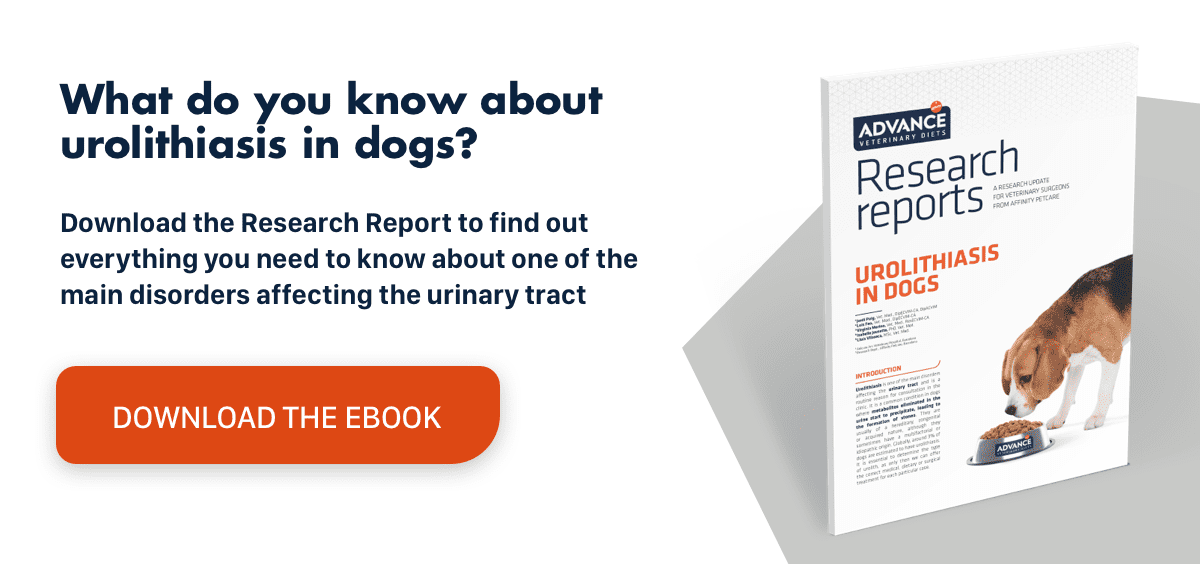Endoscopy in dogs: applications in nephrology and clinical urology
Introduction
Urinary endoscopy or cystoscopy has been used in human medicine for over 100 years and is an indispensable tool for urologists. However, its clinical application in veterinary medicine was only first reported in the 1980s.1
Even though the use of endoscopy in dogs has more applications in the urinary tract than in any other organ system, and in recent years there have been significant advances in endoscopic techniques applied in cats and dogs, it still remains an underused tool.2 This is probably because the average veterinary clinician is unaware of some of the advantages of endourological procedures in the diagnosis and management of various urinary tract diseases.
On the other hand, given the financial investment in terms of both the equipment and learning curve required to perform the procedures correctly, many of these techniques are only available at referral centres. Nevertheless, we must not forget that interventional endoscopic techniques can sometimes open the door for procedures that could otherwise not be performed using traditional surgery. They also reduce the morbidity and mortality of many diseases compared with traditional management.
Diagnostic applications of endoscopy in dogs
Transurethral cystoscopy is the most frequently performed endoscopic technique in veterinary medicine1 in order to examine the lumen and mucosa of the lower urinary tract.
Laparoscopy, on the other hand, can be used to externally examine the kidneys and assess the serous membrane of the bladder and ureters.
The main indications for diagnostic cystoscopy include:
- examination and sample collection in patients with chronic haematuria or bladder or urethral masses;
- assessment of possible anatomical changes in patients with recurrent urinary tract infections; and
- diagnostic evaluation of patients with ectopic ureter.1
Therapeutic applications of endoscopy in dogs
Endoscopy can be used in the treatment of various diseases of both the upper and lower urinary tract:
NEPHROLITHIASIS
The current recommendation is to only remove nephroliths when they cause problems. Such situations include cases of medically refractive pyelonephritis and ureteral obstruction with hydronephrosis and progressive kidney damage.
- Patients being treated with extracorporeal lithotripsy generally require an endourological procedure in order to place a ureteral stent and prevent obstructions.
- If lithotripsy is unavailable or contraindicated, endoscopic nephrolithotomy (percutaneous or surgically assisted) represents a much less invasive treatment option than traditional surgery, and with better outcomes.2
IDIOPATHIC RENAL HAEMATURIA (IRH)
IRH is a rare disease more typically seen in young dogs from large or giant breeds (unilateral in 66–75% of patients, bilateral in the rest). It is characterised by bleeding from the upper urinary tract that causes severe chronic haematuria, possibly leading to anaemia and the formation of clots that obstruct the ureter or urethra. Cystoscopy can be used to view the ureterovesical junction in attempts to identify the origin of the haematuria. Dogs with IRH were traditionally treated by a nephroureterectomy, but less aggressive options are now recommended. Nephroureteroscopy is often used in human medicine to perform electrocauterisation, but it is not feasible in veterinary medicine.
Consequently, in veterinary medicine, sclerotherapy is commonly used under cystoscopic and fluoroscopic guidance to infuse silver nitrate and/or povidone-iodine into the renal pelvis and occlude the ureter. Ureteroscopy-guided electrocautery can be attempted in dogs that are large enough if they do not respond to sclerotherapy.2,3
URETERAL INTERVENTIONS
Ureteral obstructions (stones, neoplasms, stenosis) can cause an irreversible loss of renal function if left unresolved. Traditional surgical techniques to address ureteral occlusion are associated with high rates of complications and mortality. In dogs, the endoscopy-guided placement of a ureteral stent can restore urine flow and therefore azotaemia and mortality in these patients.2,3 On the other hand, cystoscopy-guided laser ablation is a minimally invasive technique for the treatment of intramural ectopic ureters, although additional endoscopic procedures are necessary in many cases to avoid urethral incompetence.2
BLADDER AND URETHRA
Endourology offers a variety of techniques (percutaneous cystolithotomy, cystourethroscopy with laser lithotripsy or cystourethroscopy-guided basket extraction) for minimally invasive removal of uroliths from the area and with far fewer complications than those described for traditional techniques. Furthermore, endoscopy can be used to remove benign polypoid bladder masses and to inject volume bulking agents for the management of urethral sphincter incompetence. Finally, endoscopy also facilitates laser ablation of vaginal remnants associated with vaginitis and urinary infections, and permits the use of techniques to manage detrusor dyssynergia and bladder hyperactivity.2
Conclusions
Endoscopy is still a surprisingly underused tool in canine urology. However, it has multiple applications in both the diagnosis and treatment of many urinary tract diseases. Although most of these procedures must be performed by specialists, general veterinary practitioners need to be aware of them so their patients can benefit accordingly.
